- Submissions

Full Text
Modern Approaches in Drug Designing
Catching of Insects by Light and Pheromone Traps at the Time of Ground Level Enhancements (GLE)
Nowinszky L1*, Puskás J1, Kiss O2, Barta V3, Kiss M1, Hill L4 and Barczikay G4
1Eötvös Loránd University, Savaria University Centre, Hungary
2Eszterházy Károly University, Hungary
3Department of Earth Physics and Space Science (EPSS), Hungary
4Formerly Principal Entomologist, Biosecurity Tasmania, Australia
*Corresponding author: Nowinszky L, Eotvos Lorand University, Savaria University Centre, Hungary
Submission: October 17, 2022;Published: November 3, 2022

ISSN: 2576-9170 Volume4 Issue1
Introduction
The Ground Level Enhancement (GLE) events are extremely rare, averaging only a dozen in the cycle of Sun, so the data set collected so far only counts 70 events. However, in terms of speed, it surpasses other types of solar winds. A Ground Level Enhancement (GLE) occurs when the energetic particles, mainly protons emitted by the Sun have enough energy to reach even the ground of the Earth, therefore the impact of them can be measured there. The formal definition of a ground level enhancement (GLE): “A GLE event is registered when there are near-time coincident and statistically significant enhancements of the count rates of at least two differently located neutron monitors including at least one neutron monitor near sea level and a corresponding enhancement in the proton flux measured by a spaceborne instrument(s)” [1]. Because the effect of GLE is perceptible on the Earth’s surface, we attempted to demonstrate this effect in insect activity.
Material and Methods
The GLE dates to which collection data for a species could be assigned are as follows:
1981-05-10, 1989-05-06, 1989-07-25, 1989-08-16, 1989-08-24, 1989-09-26, 1992-06-
25, 1998-05-02, 2012-05-17. In Hungary, similarly to several other countries (UK, several US
states, Scandinavian countries), a light-trap network has been operating for many decades
[2]. From the huge amount of collection data of light-traps operating throughout Hungary,
we found only three moth species that flew into traps during the GLE. Only two moth species
were found from collection data on light-traps operating in two US states (North Carolina and
Nebraska) that flew into the light during GLE. This data was uploaded by the operators to
the internet. The caddisflies (Trichoptera) were collected by Ottó Kiss next to the streams of
the Bükk Mountains between the years 1980 and 1989 and on the banks of the Danube and
Tisza rivers in 1999 and 2000. He also identified and registered the captured individuals. All
specimens of all captured species were processed. However, we had relatively little data of
a certain species, thus we performed the calculations by summing all the data (Trichoptera
spec. complex). In Hungary, in the orchards of Borsod-Abaúj-Zemplén county, biologist Gábor
Barczikay operated pheromone traps between 1982 and 2013. These pheromone traps
collected seven species of pest moths and the number of captured moths were registered
daily by Gábor Barczikay. Counting per day is extremely rare because it is usually counted
every 3-7 days worldwide [3]. From this single huge collection of data, individuals of four
moth species were trapped during the GLE. The catching data are shown in Table 1. We added
up by species the number of specimens caught 2-2 nights before and after the Ground Level
Enhancements (-2, -1, 0, +1, +2 nights), then expressed the catch
results of the individual days in the percentage of the total number
of specimens [4]. We performed the t-test calculations with our
own program. This program can process any number of data. The
figures were edited using excel 2016.
Table 1:Light-trap and pheromone trap data of examined species.
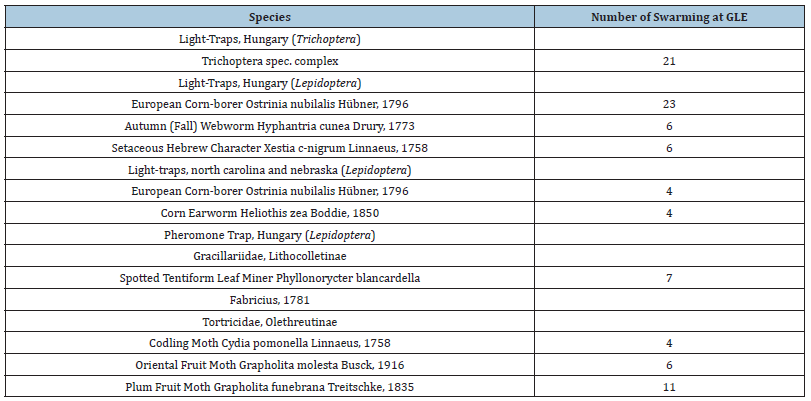
Result and Discussion
Our results are shown in Figure 1-10. Based on our results, we find it proven that the results of light and pheromone trap catches change on the evening and night of the Ground Level Enhancements day, compared to the catch of the previous and following days. Thus, insects respond to effects during GLE by increasing or decreasing their flying activity. The catching results of the light-traps in Hungary show a decrease on that day or the next day. Catches of light-trapped moths in two US states are increasing on GLE days. It is striking, however, that the catch of European Corn-borer (Ostrinia nubilalis Hbn) is already high on the previous day. The catch of the four species collected with the pheromone trap is high on the day of GLE. The catch of Spotted Tentiform Leaf Miner (Phyllonorycter blancardella Fabr) is high even on the next day. The increase or decrease of the catch is explainable by our previous hypotheses [5]. The divergent responses of species have many reasons. The significance of and tolerance to environmental factors of the species vary. Thus, the same factor can express differently. The species have different survival strategies in response to adverse effects such as passivity, or hiding versus increased activity, to ensure the survival of species. Therefore, the insects seek to “to carry out their duties in a hurry”. According to our hypothesis, the explanation of our results can be the following: The low catch values always refer to situations in which the flight activity of insects diminishes. However, high values are not so clear to interpret. Major environmental changes bring about physiological transformation in the insect organism. The imago is short-lived, therefore unfavourable environmental effects the survival of not just the individual, but the population. In our hypothesis, the individual may adopt two kinds of strategies to evade the impacts hindering the normal functioning of its life phenomena. It may either display more liveliness, by increasing the intensity of its flight, copulation and egg-laying activity or take refuge in passivity to weather an unfavourable situation. And so, by the present state of our knowledge we might say that favourable and unfavourable environmental effects might equally be accompanied by a high catch [5].
Figure 1: Light trap catch of trichoptera spec. complex in correction with the Ground Level Enhancements (GLE).
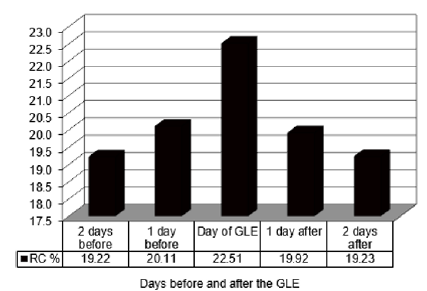
Figure 2:Light-trap catch of European Corn-borer (Ostrinia nubilalis Hübner, 1796) in connection with the Ground Level Enhancements (GLE) in Hungary.
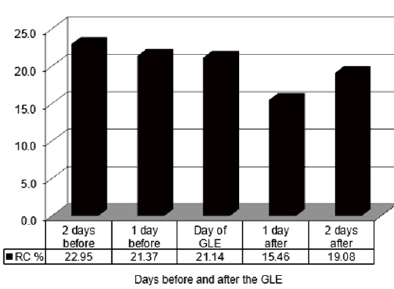
Figure 3: Light trap catch of Autumn (Fall) Webworm (Hyphantria cunea Drury, 1773) in connection with the Ground Level Enhancements (GLE).
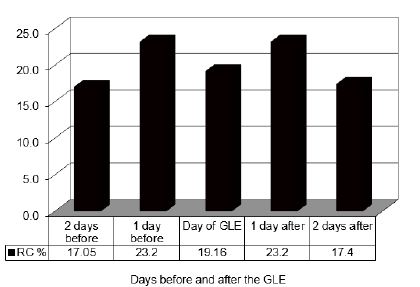
Figure 4: Light-trap catch of Setaceous Hebrew Character (Xestia c-nigrum Linnaeus, 1758) in connection with the Ground Level Enhancements (GLE).
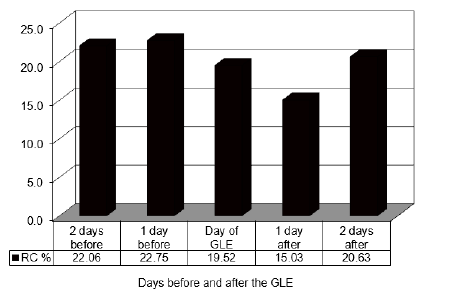
Figure 5: Light-trap catch of European Corn-borer (Ostrinia nubilalis Hübner, 1796) in connection with the Ground Level Enhancements (GLE) in North Carolina and Nebraska.

Figure 6:Light trap catch of Corn Earworm (Heliothis zea Boddie, 1850) in connection with the Ground Level Enhancements (GLE).

Figure 7:Pheromone trap catch of Oriental Fruit Moth (Grapholita molesta
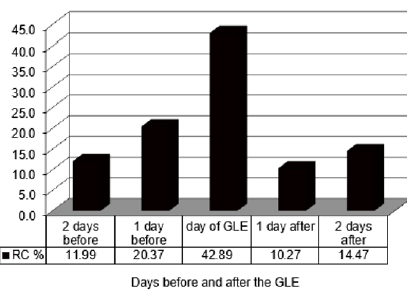
Figure 8:Pheromone trap catch of Plum Fruit Moth (Grapholita funebranaTreitschke, 1835) in connection with the Ground Level Enhancements (GLE).
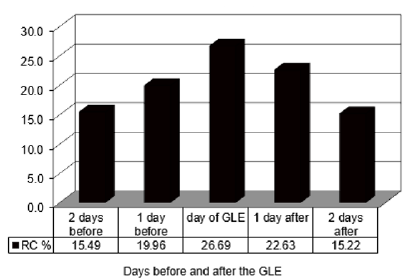
Figure 9:Pheromone trap catch of Codling Moth (Cydia pomenella Linnaeus, 1758) in connection with the Ground Level Enhancements (GLE).
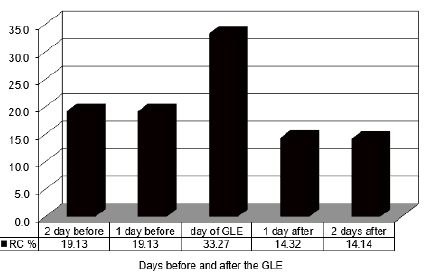
Figure 10:Pheromone trap catch of Spotted Tentiform Leaf Miner (Phyllonorycter blancardella Fabricius, 1781) in connection with the Ground Level Enhancements (GLE).

References
References
- Poluianov SV, Usoskin IG, Mishev AL, Shea MA, Smart DF (2017) GLE and sub-GLE redefinition in the light of high-altitude polar neutron monitors. Sol Phys 292: 176.
- Jermy T (1961) Investigation of the swarming of harmful insects using light-traps (in Hungarian). A Timely Questions of Plant Protection 2: 53-61.
- Nowinszky L, Kiss M, Puskás J (2018) Light and pheromone trap catch of insects. Globe, p. 118.
- Nowinszky L, Puskás J, Kiss M (2020) Observations on the light-trap catch of insects during hurricanes. Acta Scientific Veterinary Sciences 2(4): 22-25.
- Nowinszky L (2003) The handbook of light trapping. Savaria University Press, Hungary, p. 276.
© 2022 Nowinszky L. This is an open access article distributed under the terms of the Creative Commons Attribution License , which permits unrestricted use, distribution, and build upon your work non-commercially.
 a Creative Commons Attribution 4.0 International License. Based on a work at www.crimsonpublishers.com.
Best viewed in
a Creative Commons Attribution 4.0 International License. Based on a work at www.crimsonpublishers.com.
Best viewed in 







.jpg)






























 Editorial Board Registrations
Editorial Board Registrations Submit your Article
Submit your Article Refer a Friend
Refer a Friend Advertise With Us
Advertise With Us
.jpg)






.jpg)













.bmp)
.jpg)
.png)
.jpg)














.png)

.png)



.png)






